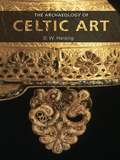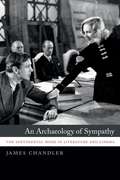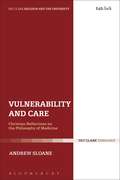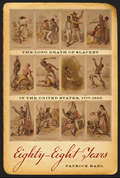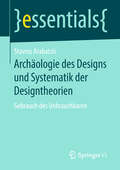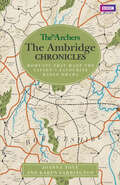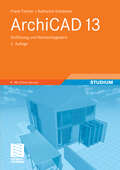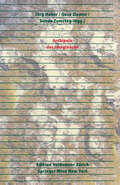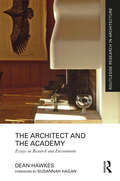- Table View
- List View
Archaeology and the Pan-European Romanesque
by T. O'KeefeRomanesque is the style name given to the art and architecture of Europe in the eleventh and twelfth centuries. First used in the early nineteenth century to express the perceived indebtedness of the visual-artistic and architectural cultures of this period to their Classical antecedents, the term has survived two centuries of increasingly sophisticated readings of the relevant medieval buildings and objet d'art. The study of Romanesque as a stylistic phenomenon is now almost exclusively the preserve of art historians, particularly in the English-speaking world. Here 'the Romanesque' is subjected to a long overdue, theoretically-informed, archaeological inquiry. The ideological foundations and epistemological boundaries of Romanesque scholarship are critiqued, and the constructs of 'Romanesque' and 'Europe' are deconstructed, and alternative strategies for interpreting Romanesque's constituent material are mapped out. This book should, at the very least, illuminate the need for debate.
The Archaeology of Celtic Art
by D.W. HardingMore wide ranging, both geographically and chronologically, than any previous study, this well-illustrated book offers a new definition of Celtic art. Tempering the much-adopted art-historical approach, D.W. Harding argues for a broader definition of Celtic art and views it within a much wider archaeological context. He re-asserts ancient Celtic identity after a decade of deconstruction in English-language archaeology. Harding argues that there were communities in Iron Age Europe that were identified historically as Celts, regarded themselves as Celtic, or who spoke Celtic languages, and that the art of these communities may reasonably be regarded as Celtic art. This study will be indispensable for those people wanting to take a fresh and innovative perspective on Celtic Art.
The Archaeology of Celtic Art
by D.W. HardingMore wide ranging, both geographically and chronologically, than any previous study, this well-illustrated book offers a new definition of Celtic art. Tempering the much-adopted art-historical approach, D.W. Harding argues for a broader definition of Celtic art and views it within a much wider archaeological context. He re-asserts ancient Celtic identity after a decade of deconstruction in English-language archaeology. Harding argues that there were communities in Iron Age Europe that were identified historically as Celts, regarded themselves as Celtic, or who spoke Celtic languages, and that the art of these communities may reasonably be regarded as Celtic art. This study will be indispensable for those people wanting to take a fresh and innovative perspective on Celtic Art.
The Archaeology of Seeing: Science and Interpretation, the Past and Contemporary Visual Art
by Liliana JanikThe Archaeology of Seeing provides readers with a new and provocative understanding of material culture through exploring visual narratives captured in cave and rock art, sculpture, paintings, and more. The engaging argument draws on current thinking in archaeology, on how we can interpret the behaviour of people in the past through their use of material culture, and how this affects our understanding of how we create and see art in the present. Exploring themes of gender, identity, and story-telling in visual material culture, this book forces a radical reassessment of how the ability to see makes us and our ancestors human; as such, it will interest lovers of both art and archaeology. Illustrated with examples from around the world, from the earliest art from hundreds of thousands of years ago, to the contemporary art scene, including street art and advertising, Janik cogently argues that the human capacity for art, which we share with our most ancient ancestors and cousins, is rooted in our common neurophysiology. The ways in which our brains allow us to see is a common heritage that shapes the creative process; what changes, according to time and place, are the cultural contexts in which art is produced and consumed. The book argues for an innovative understanding of art through the interplay between the way the human brain works and the culturally specific creation and interpretation of meaning, making an important contribution to the debate on art/archaeology.
The Archaeology of Seeing: Science and Interpretation, the Past and Contemporary Visual Art
by Liliana JanikThe Archaeology of Seeing provides readers with a new and provocative understanding of material culture through exploring visual narratives captured in cave and rock art, sculpture, paintings, and more. The engaging argument draws on current thinking in archaeology, on how we can interpret the behaviour of people in the past through their use of material culture, and how this affects our understanding of how we create and see art in the present. Exploring themes of gender, identity, and story-telling in visual material culture, this book forces a radical reassessment of how the ability to see makes us and our ancestors human; as such, it will interest lovers of both art and archaeology. Illustrated with examples from around the world, from the earliest art from hundreds of thousands of years ago, to the contemporary art scene, including street art and advertising, Janik cogently argues that the human capacity for art, which we share with our most ancient ancestors and cousins, is rooted in our common neurophysiology. The ways in which our brains allow us to see is a common heritage that shapes the creative process; what changes, according to time and place, are the cultural contexts in which art is produced and consumed. The book argues for an innovative understanding of art through the interplay between the way the human brain works and the culturally specific creation and interpretation of meaning, making an important contribution to the debate on art/archaeology.
An Archaeology of Sympathy: The Sentimental Mode in Literature and Cinema
by James ChandlerIn the middle of the eighteenth century, something new made itself felt in European culture—a tone or style that came to be called the sentimental. The sentimental mode went on to shape not just literature, art, music, and cinema, but people’s very structures of feeling, their ways of doing and being. In what is sure to become a critical classic, An Archaeology of Sympathy challenges Sergei Eisenstein’s influential account of Dickens and early American film by tracing the unexpected history and intricate strategies of the sentimental mode and showing how it has been reimagined over the past three centuries. James Chandler begins with a look at Frank Capra and the Capraesque in American public life, then digs back to the eighteenth century to examine the sentimental substratum underlying Dickens and early cinema alike. With this surprising move, he reveals how literary spectatorship in the eighteenth century anticipated classic Hollywood films such as Capra’s It Happened One Night, Mr. Deeds Goes to Town, and It’s a Wonderful Life. Chandler then moves forward to romanticism and modernism—two cultural movements often seen as defined by their rejection of the sentimental—examining how authors like Mary Shelley, Joseph Conrad, James Joyce, and Virginia Woolf actually engaged with sentimental forms and themes in ways that left a mark on their work. Reaching from Laurence Sterne to the Coen brothers, An Archaeology of Sympathy casts new light on the long eighteenth century and the novelistic forebears of cinema and our modern world.
An Archaeology of Sympathy: The Sentimental Mode in Literature and Cinema
by James ChandlerIn the middle of the eighteenth century, something new made itself felt in European culture—a tone or style that came to be called the sentimental. The sentimental mode went on to shape not just literature, art, music, and cinema, but people’s very structures of feeling, their ways of doing and being. In what is sure to become a critical classic, An Archaeology of Sympathy challenges Sergei Eisenstein’s influential account of Dickens and early American film by tracing the unexpected history and intricate strategies of the sentimental mode and showing how it has been reimagined over the past three centuries. James Chandler begins with a look at Frank Capra and the Capraesque in American public life, then digs back to the eighteenth century to examine the sentimental substratum underlying Dickens and early cinema alike. With this surprising move, he reveals how literary spectatorship in the eighteenth century anticipated classic Hollywood films such as Capra’s It Happened One Night, Mr. Deeds Goes to Town, and It’s a Wonderful Life. Chandler then moves forward to romanticism and modernism—two cultural movements often seen as defined by their rejection of the sentimental—examining how authors like Mary Shelley, Joseph Conrad, James Joyce, and Virginia Woolf actually engaged with sentimental forms and themes in ways that left a mark on their work. Reaching from Laurence Sterne to the Coen brothers, An Archaeology of Sympathy casts new light on the long eighteenth century and the novelistic forebears of cinema and our modern world.
An Archaeology of Sympathy: The Sentimental Mode in Literature and Cinema
by James ChandlerIn the middle of the eighteenth century, something new made itself felt in European culture—a tone or style that came to be called the sentimental. The sentimental mode went on to shape not just literature, art, music, and cinema, but people’s very structures of feeling, their ways of doing and being. In what is sure to become a critical classic, An Archaeology of Sympathy challenges Sergei Eisenstein’s influential account of Dickens and early American film by tracing the unexpected history and intricate strategies of the sentimental mode and showing how it has been reimagined over the past three centuries. James Chandler begins with a look at Frank Capra and the Capraesque in American public life, then digs back to the eighteenth century to examine the sentimental substratum underlying Dickens and early cinema alike. With this surprising move, he reveals how literary spectatorship in the eighteenth century anticipated classic Hollywood films such as Capra’s It Happened One Night, Mr. Deeds Goes to Town, and It’s a Wonderful Life. Chandler then moves forward to romanticism and modernism—two cultural movements often seen as defined by their rejection of the sentimental—examining how authors like Mary Shelley, Joseph Conrad, James Joyce, and Virginia Woolf actually engaged with sentimental forms and themes in ways that left a mark on their work. Reaching from Laurence Sterne to the Coen brothers, An Archaeology of Sympathy casts new light on the long eighteenth century and the novelistic forebears of cinema and our modern world.
An Archaeology of Sympathy: The Sentimental Mode in Literature and Cinema
by James ChandlerIn the middle of the eighteenth century, something new made itself felt in European culture—a tone or style that came to be called the sentimental. The sentimental mode went on to shape not just literature, art, music, and cinema, but people’s very structures of feeling, their ways of doing and being. In what is sure to become a critical classic, An Archaeology of Sympathy challenges Sergei Eisenstein’s influential account of Dickens and early American film by tracing the unexpected history and intricate strategies of the sentimental mode and showing how it has been reimagined over the past three centuries. James Chandler begins with a look at Frank Capra and the Capraesque in American public life, then digs back to the eighteenth century to examine the sentimental substratum underlying Dickens and early cinema alike. With this surprising move, he reveals how literary spectatorship in the eighteenth century anticipated classic Hollywood films such as Capra’s It Happened One Night, Mr. Deeds Goes to Town, and It’s a Wonderful Life. Chandler then moves forward to romanticism and modernism—two cultural movements often seen as defined by their rejection of the sentimental—examining how authors like Mary Shelley, Joseph Conrad, James Joyce, and Virginia Woolf actually engaged with sentimental forms and themes in ways that left a mark on their work. Reaching from Laurence Sterne to the Coen brothers, An Archaeology of Sympathy casts new light on the long eighteenth century and the novelistic forebears of cinema and our modern world.
Archaeology of the Political Unconscious: Theater and Opera in East Berlin, 1967–1977 (ISSN)
by Jennifer WilliamsThis book investigates the aesthetic and political dialectics of East Berlin to argue how its theater and opera stages incited artists to act out, fuel, and resist the troubled construction of political legitimacy.This volume investigates three case studies of how leading East Berlin stages excavated fragmentary materials from Weimar dramatist Bertolt Brecht’s oeuvre and repurposed them for their post‑fascist society: Uta Birnbaum’s 1967 Man Equals Man at the Berliner Ensemble, Joachim Herz’s 1977 Rise and Fall of the City of Mahagonny at the Komische Oper, and Heiner Muller’s own productions of his trailblazing plays. In each instance, reused theatrical artifacts dialectically expressed the contradictions inherent in East German political legitimacy, at once amplifying and critiquing it. Illuminated by original archival research and translations of letters and artistic ephemera published in English for the first time, and engaging with alternative East German feminist epistemologies, this book’s critical investigation of culture and political legitimacy in the shadow of Germany’s fascist past resonates beyond the Iron Curtain into the twenty‑first century. Its final chapter examines how performative artifacts influence the process of political legitimation in more recent history, ranging from Checkpoint Charlie tourism to the January 6, 2021 US insurrection.This study will be of great interest to students and scholars in theater and performance studies, art history, musicology, German studies, anthropology, and political science.
Archaeology of the Political Unconscious: Theater and Opera in East Berlin, 1967–1977 (ISSN)
by Jennifer WilliamsThis book investigates the aesthetic and political dialectics of East Berlin to argue how its theater and opera stages incited artists to act out, fuel, and resist the troubled construction of political legitimacy.This volume investigates three case studies of how leading East Berlin stages excavated fragmentary materials from Weimar dramatist Bertolt Brecht’s oeuvre and repurposed them for their post‑fascist society: Uta Birnbaum’s 1967 Man Equals Man at the Berliner Ensemble, Joachim Herz’s 1977 Rise and Fall of the City of Mahagonny at the Komische Oper, and Heiner Muller’s own productions of his trailblazing plays. In each instance, reused theatrical artifacts dialectically expressed the contradictions inherent in East German political legitimacy, at once amplifying and critiquing it. Illuminated by original archival research and translations of letters and artistic ephemera published in English for the first time, and engaging with alternative East German feminist epistemologies, this book’s critical investigation of culture and political legitimacy in the shadow of Germany’s fascist past resonates beyond the Iron Curtain into the twenty‑first century. Its final chapter examines how performative artifacts influence the process of political legitimation in more recent history, ranging from Checkpoint Charlie tourism to the January 6, 2021 US insurrection.This study will be of great interest to students and scholars in theater and performance studies, art history, musicology, German studies, anthropology, and political science.
The Archangel Michael in Africa: History, Cult and Persona
by Ingvild Saelid Gilhus Alexandros Tsakos Marta Camilla WrightThis book takes an interdisciplinary approach in order to understand angels, focusing on Africa and the cult and persona of the Archangel Michael. Traditional methods in the study of religion including philology, papyrology, art and iconography, anthropology, history, and psychology are combined with methodologies deriving from memory studies, graphic design, art education, and semiotics. Chapters explore both historical and contemporary case studies from Coptic Egypt, Nubia, Ethiopia, and South Africa, providing a comparative perspective on the Archangel Michael, alongside 25 images. Innovative in both its methodologies and geographical focus, this book is an important contribution to the study of religion and art, Christianity in Africa, and Coptic studies.
The Archangel Michael in Africa: History, Cult and Persona (Bloomsbury Revelations Ser.)
by Ingvild Saelid Gilhus Alexandros Tsakos Marta Camilla WrightThis book takes an interdisciplinary approach in order to understand angels, focusing on Africa and the cult and persona of the Archangel Michael. Traditional methods in the study of religion including philology, papyrology, art and iconography, anthropology, history, and psychology are combined with methodologies deriving from memory studies, graphic design, art education, and semiotics. Chapters explore both historical and contemporary case studies from Coptic Egypt, Nubia, Ethiopia, and South Africa, providing a comparative perspective on the Archangel Michael. The book contains 25 images, and further images can be found on the book's webpage.Innovative in both its methodologies and geographical focus, this book is an important contribution to the study of religion and art, Christianity in Africa, and Coptic studies.
Archäologie des Designs und Systematik der Designtheorien: Gebrauch des Unbrauchbaren (essentials)
by Stavros ArabatzisDieses essential bietet eine Archäologie des Designs und eine Systematik der Designtheorie. Es erweitert das Designkonzept des modernen Industriezeitalters auf immaterielle Designphänomene, Netzwerke und ihre Trägermedien. Zugleich sucht es nach den Kräften des modernen Designs, die dieses in seiner Geschichte als poietisches Vermögen bestimmen und immer weiter vorantreiben. Hierbei zeigt Stavros Arabatzis, dass Design auch gegen sich selbst arbeitet, sodass die poietische Praxis des Designs ebenso mit dem Verlust dessen einhergeht, was der Autor hier die Resistenz des Designs und den neuen Gebrauch als ‚gutes Design‘ nennt: die Freiheit vom Design (die Verweigerung des Gebrauchs) im Design (anarchischer Gebrauch).
The Archers: An Unofficial Companion
by Rosie DillonIt’s been sixty years since the familiar dum-di-dum-di-dum-di-dum of ‘Barwick Green’ first brought The Archers to our airwaves, and in that time millions of listeners have followed the lives of folk in Ambridge. This new compendium brings together facts and trivia about characters, controversies and country customs in one handy volume.
The Archers: Moments that made the nation's favourite radio drama
by Karen Farrington Joanna ToyeThe Archers, like life, is made of moments: marriages and births, loves and losses, triumphs and disasters. It has been the soundtrack of our lives for over six decades, from stooking corn with Dan Archer in the 1950s to the tragic death of Nigel Pargetter in 2011.We know the characters of Ambridge – from much-loved Phil and Jill Archer and the irrepressible Grundys to wayward Brian Aldridge – like we know close friends. This book is their tribute.The Ambridge Chronicles relives some of the defining moments in The Archers history, delving into the rich archive of its scripts, to celebrate the highs and lows that have made the world’s longest running radio serial so treasured.
The Archers Archives: 60 Years Of Life, Love And Stories From Ambridge
by Chris Arnot Simon FrithThe Archers Archives celebrates 60 years of the nation's favourite radio drama - looking back at the most dramatic events to happen over 16,000 episodes, complete with cast and crew interviews. Relive the defining moments in Archers history, from the devastating 1955 stables fire and the 1957 Tom Forrest manslaughter charge to the shocking imprisonment of Susan Carter in the early 1990s, the revelation of Brian Aldridge's affair with Siobhan Hathaway, and the Grundys' eviction from Grange Farm and exile to Meadow Rise.Script-writer Simon Frith and journalist Chris Arnot take you inside the creative life of the show, sharing how the series' storylines are planned and produced, and how the historical and cultural background of each period is interwoven into the everyday lives of the residents of Ambridge. Complete with original photos, some never-before-seen, The Archers Archives is an indispensable addition to every Archers fan's collection.
The Archers Miscellany: The First Official Trivia Collection From Britain's Best-loved Radio Drama
by Joanna ToyeThe first official trivia collection from Britain's best-loved radio drama.Have you ever wondered about the attractions at Ambridge fetes? Puzzled over who the winners were at the Flower and Produce Show? Been curious about details of past Bonfire Nights, or even menus at The Bull? Discover the whos, whats, wheres and whys of the show's past 60 years in The Archers Miscellany.Discover which resident has the most names and meet the animals of Ambridge; learn the order of illumination for the Christmas lights switch-on; ponder Great Ambridge Mysteries and remember Ambridge Wanderers football team fixtures from the glory days of the 1970s.Containing information gathered from the vast BBC Birmingham Archers archives and beautifully illustrated throughout, The Archers Miscellany is the ultimate trivia book for all things Ambridge.
The Archers Quizbook: Join Ambridge treasure Lynda Snell on a quiz quest around Britain’s most loved village
by The Puzzle HouseWhich traditionally comes first in the Ambridge year, the Village Fete or the Flower and Produce Show?Which tool appears on the Pargetter coat of arms?Which member of the Archers clan has a first name where all the letters read in alphabetical order?Ambridge is a place many of us know almost as well as our own home towns. But while millions of people are invested in the goings-on in this picturesque village, few have had the privilege of walking its winding lanes. Now you can. Join Lynda Snell, a true pillar of this rural community, as she takes you on a guided tour of radio's most well-loved village.Starting at the summit of Lakey Hill, with its sweeping views of rural Borsetshire, Lynda will lead you around the village's landmarks and institutions imparting wisdom and gossip as she goes. Sun yourself in the beer garden of the Bull, watch the world go by from a bench on the village green and don your wellies for a wander around Brookfield. There are weddings to attend at St Stephen's, productions to enjoy at the Village Hall and deals to be done at the Dower House.Each chapter centres on key locations to challenge your knowledge in all manner of Ambridge affairs. Whether you're a lifelong listener of The Archers, have an ear for gossip, or are a relative newbie, you will be able to put your area of expertise to the test. With 70 years of rich rural history to explore, you might even learn something new.
The Archers Unseen: A secret history of Ambridge
by Julie BeckettBlossom Hill Cottage – a secluded place with a dark past. It’s where Peggy discovered her husband Jack was an alcoholic, and it’s also where Helen stabbed her husband Rob, desperate in the face of his manipulation and control.And on to stately pile Lower Loxley – the Pargetters are proud of their centuries-old heritage, but how did Elizabeth arrive there, after her own turbulent early years, at odds with her family?This knowing excavation of Ambridge delights in the follies and everyday mischief of the inhabitants of England’s most famous village. Location by location, via the Bull and the occasional barn, the narrator takes us behind closed doors and picks up on all sorts of whispers around money, births, deaths and marriages, and romance and sex (often in inappropriate places …)In this canny, in-world exploration of Britain’s best-loved soap, we see how every relationship, each personal triumph and disaster, and all the hopes and dreams of a community over the years are folded into the personal stories of the characters we know so well today.
Archi.Pop: Mediating Architecture in Popular Culture
by Edited by D. Medina LasanskyHow have architecture and design been represented in popular culture? How do these fictional reflections feed back into and influence 'the real world'? Archi.Pop: Architecture and Design in Popular Culture offers the first contemporary critical overview of this diverse and intriguing relationship in cultural forms including television, cinema, iconic buildings and everyday interiors, music and magazines.Bringing the study of architecture and culture firmly to the contemporary world, Archi.Pop offers a unique critical investigation into how this dynamic relationship has shaped the way we live and the way we interact with the constructed world around us.
Archi.Pop: Mediating Architecture in Popular Culture
by D. Medina LasanskyHow have architecture and design been represented in popular culture? How do these fictional reflections feed back into and influence 'the real world'? Archi.Pop: Architecture and Design in Popular Culture offers the first contemporary critical overview of this diverse and intriguing relationship in cultural forms including television, cinema, iconic buildings and everyday interiors, music and magazines.Bringing the study of architecture and culture firmly to the contemporary world, Archi.Pop offers a unique critical investigation into how this dynamic relationship has shaped the way we live and the way we interact with the constructed world around us.
ArchiCAD 13: Einführung und Nachschlagewerk
by Frank Fischer Katharina GolubkowEin neues Programm ist oft mit vielen Unsicherheiten und Schwierigkeiten verbunden. Die Autoren zeigen, wie es auch anders gehen kann und vermitteln mit ihrem Buch einen problemlosen und einfachen Einstieg zur 3D-Architektursoftware ArchiCAD 13 in zwei Teilen. Teil 1: Der Leser startet zunächst mit einem Übungsprojekt und lernt dabei den Umgang mit ArchiCAD 13 und den wichtigsten Befehlen des Programms kennen. Der so gewonnene Überblick des wichtigsten Repertoires an Werkzeugen und Befehlen gibt Sicherheit zum Erstellen eigener Modelle. Teil 2: Das Nachschlagewerk ist beim Bearbeiten eine schnelle und erfolgreiche Hilfestellung. Alle Befehle und Werkzeuge sind hier übersichtlich zusammengefasst. Die 2. Auflage wurde hinsichtlich der aktuellen Programmentwicklung überarbeitet und ist jetzt durchgehend farbig gestaltet. Im zweiten Teil wurde die Erstellung eines eigenen Profils, eigener Schraffuren und Materialien sowie die Ausgabe der Daten, inklusive des Publishers, angefügt.
Archipele des Imaginären (Edition Voldemeer Zürich)
Der Begriff des Imaginären ist geprägt von einer langen und komplexen Geschichte. Der Band "Archipele des Imaginären" strebt nicht nach einer Vereinfachung dieser Komplexität. Vielmehr werden in vier Schwerpunkten (Archipel des Unsichtbaren, Archipel der Regel, Archipel des Schwindels, Archipel der Peinlichkeit) unterschiedliche (Theorie-)Horizonte in ein Verhältnis wechselseitiger Erhellung gerückt. Die in diesem Band versammelten Beiträge kreisen um einen für Theorie und Praxis der Gestaltung zentralen Begriff, um das Imaginäre, das in seiner Ambivalenz das Neue (respektive dessen Wahrnehmung) sowohl blockieren als auch für seine Schöpfung und Entstehung verantwortlich zeichnen kann.
The Architect and the Academy: Essays on Research and Environment (Routledge Research in Architecture)
by Dean HawkesThis book presents an expansive overview of the development of architectural and environmental research, with authoritative essays spanning Dean Hawkes’ impressive 50-year academic career. The book considers the relationship between the technologies of the environment and wider historical and theoretical factors, with chapters on topics ranging from the origins of modern ‘building science’ in Renaissance England to technology and imagination in architecture. It includes numerous architectural examples from renowned architects such as Christopher Wren, Peter Zumthor, Alvar Aalto, Robert Venturi and Carlo Scarpa. Aimed at students, scholars, and researchers in architecture and beyond, this illustrated volume collates important and wide-ranging essays tracing the definition, scope and methodologies of architectural and environmental studies, with a foreword by Susannah Hagan.

